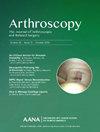脆性指数可在最小程度上改进医学文献的解读:不确定性海洋中的砖块之舟
IF 4.4
1区 医学
Q1 ORTHOPEDICS
Arthroscopy-The Journal of Arthroscopic and Related Surgery
Pub Date : 2025-02-01
DOI:10.1016/j.arthro.2024.10.007
引用次数: 0
摘要
脆性指数(FI)是统计学意义的一种伪装。也许它很吸引人,也很有趣,但在它的面具背后,不过是将结果二分为 "具有统计学意义 "和 "不具有统计学意义"。在医学文献中,我们必须停止二分法,开始衡量效果的大小以及这种估计的不确定性。统计显著性会扼杀思想。然而,这是医学研究界所掌握的工具。难怪我们会将结果二分法;我们一直被鼓励这样做。问题是,"我们是否会认识到这种做法的愚蠢,并转而思考已发表研究的相关性和准确性等更关键的问题?FI被誉为一种能提供超越统计意义的洞察力的指标。它不是对不确定性的测量(这正是脆性的含义),而是对产生大于 0.05 的 p 值所需的患者人数进行量化。遗憾的是,尽管初衷是好的,但脆性指数并不能代替临床试验数据的稳健性,也不能代替基本的统计分析。相比之下,报告和解释置信区间能更有效地提供一种不确定感。尽管可信区间远非完美,但它提供了一个与观察到的研究数据相符的数值范围。这使得数据的不确定性变得透明。要加深对数据的理解,首先要摆脱统计意义的束缚。本文章由计算机程序翻译,如有差异,请以英文原文为准。
Editorial Commentary: The Fragility Index Minimally Improves Interpretation of the Medical Literature: A Boat Made of Bricks in a Sea of Uncertainty
The fragility index (FI) is statistical significance in a costume. Perhaps attractive and amusing, but behind the mask, it’s nothing more than spin, dichotomizing results as “statistically significant” versus “not”. In the medical literature, we must stop dichotomizing and start measuring the magnitude of effect and the uncertainty in this estimate. Statistical significance is thought stifling. Yet, it is the tool with which the medical research community has been provided. No wonder we dichotomize results; we’ve been encouraged to do so. The question is, “Will we recognize the folly in this exercise and move on to more critical questions of relevance and accuracy of published research?” The FI is heralded as a metric that provides insight beyond statistical significance. Rather than provide a measure of uncertainty, which is what fragility implies, it quantifies the number of patients needed to produce a P value that’s greater than .05. Unfortunately, although well intended, the FI is not a surrogate for robustness of clinical trial data, nor the underlying statistical analysis. In contrast, reporting and interpreting a confidence interval more effectively provides a sense of uncertainty. While far from perfect, the confidence interval provides a range of values that are compatible with the observed study data. This makes the uncertainty of the data transparent. Advancing our understanding of the data starts with stepping away from statistical significance.
求助全文
通过发布文献求助,成功后即可免费获取论文全文。
去求助
来源期刊
CiteScore
9.30
自引率
17.00%
发文量
555
审稿时长
58 days
期刊介绍:
Nowhere is minimally invasive surgery explained better than in Arthroscopy, the leading peer-reviewed journal in the field. Every issue enables you to put into perspective the usefulness of the various emerging arthroscopic techniques. The advantages and disadvantages of these methods -- along with their applications in various situations -- are discussed in relation to their efficiency, efficacy and cost benefit. As a special incentive, paid subscribers also receive access to the journal expanded website.

 求助内容:
求助内容: 应助结果提醒方式:
应助结果提醒方式:


